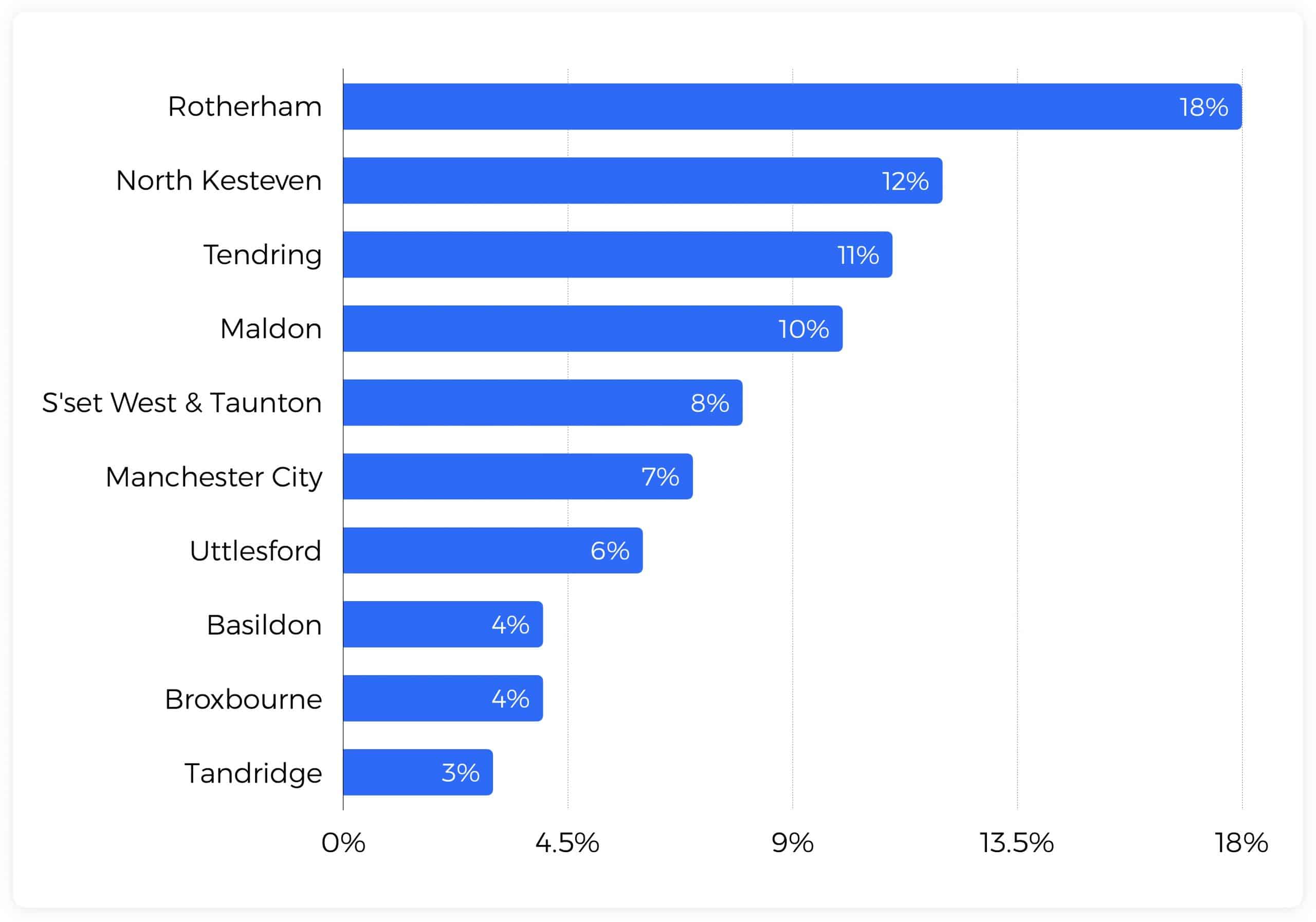The Welcome Back Fund (WBF) provided UK council funding to help encourage visitors back to high streets and town centres in the wake of the Covid-19 pandemic. In this report rank councils by increases in dwell-time and ask – how successful was it?
The Welcome Back Fund (WBF)
The Welcome Back Fund (WBF) was announced in March 2021 as an extension to the Reopening High Streets Safely Fund (RHSSF). These funds enabled councils to invest in post-Covid recovery and to stimulate economic prosperity, especially through retail and leisure. The implementation period – the period over which councils are required to dispose of WBF funding – ran up until March 31st 2022.
In this report we look back at councils’ performance levels at the time of the Fund’s announcement and compare them to where they ended up in the three months to March 31s. The results are used to rank the best performing councils during the WBF campaign period across four key metrics: footfall, catchment, dwell-time and visit frequency.
Dwell-time performance
Why is Dwell-time important? High dwell-time is indicative of strong place performance and is shown to reflect the value of visits made by people to places. Longer visits to high-streets or even stores translates into greater local spending. And this value isn’t only economic. Visitor satisfaction and enjoyment of places can also be measured by this robust and verified means.
How Huq does it: Visit duration is observed for each unique visitor and then averaged over the population, with the result expressed in minutes. Huq’s collection methodology allows for accurate dwell-time measurement for an area. Its unique ID and high frequency of observations enables its platform to accurately measure how long visitors spend there.
Dwell increase during WBF

Rotherham Council, located next to Sheffield in Yorkshire & the Humber, comes first for seeing the greatest increase – 18% – in visit duration over the Welcome Back Fund implementation period. That strong performance is followed by North Kesteven in the East Midlands with 12% and Tendring, in Essex, just behind at 11%.
Across the top 10 winners, half are located in the East of England, two in the North and three in the South East and West. Across all councils analysed, Huq found there to be a 1% increase in dwell-time during the Welcome Back Fund implementation period, with those in the top 10 tracking collectively at 8%.
Methodology
Huq helps 50+ UK councils understand how people use their towns, high-streets and spaces. Its measurement platform offers insights into key performance indicators including:
- How busy places are
- Where visitors come from
- How long they stay for
- How often they come back
Using quality, first party observations and big data practices, these detailed and verified insights are available immediately, UK-wide. No hardware and no surveys required!

